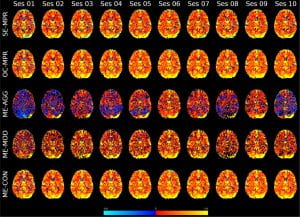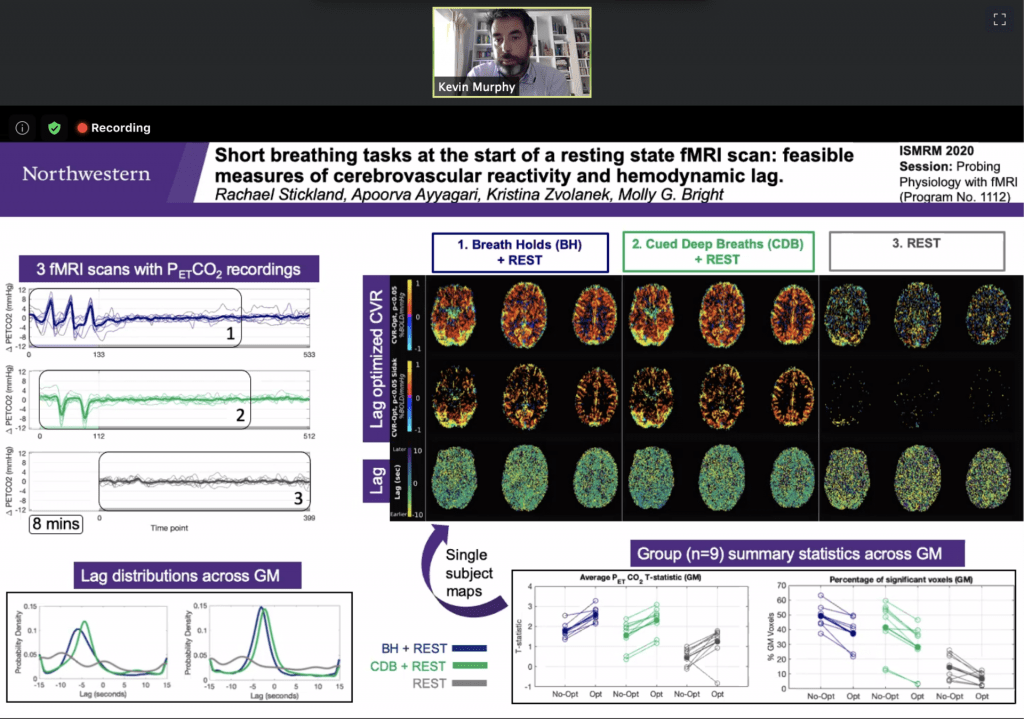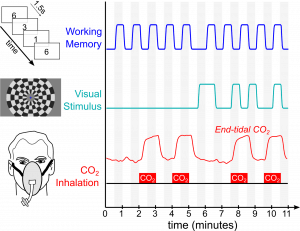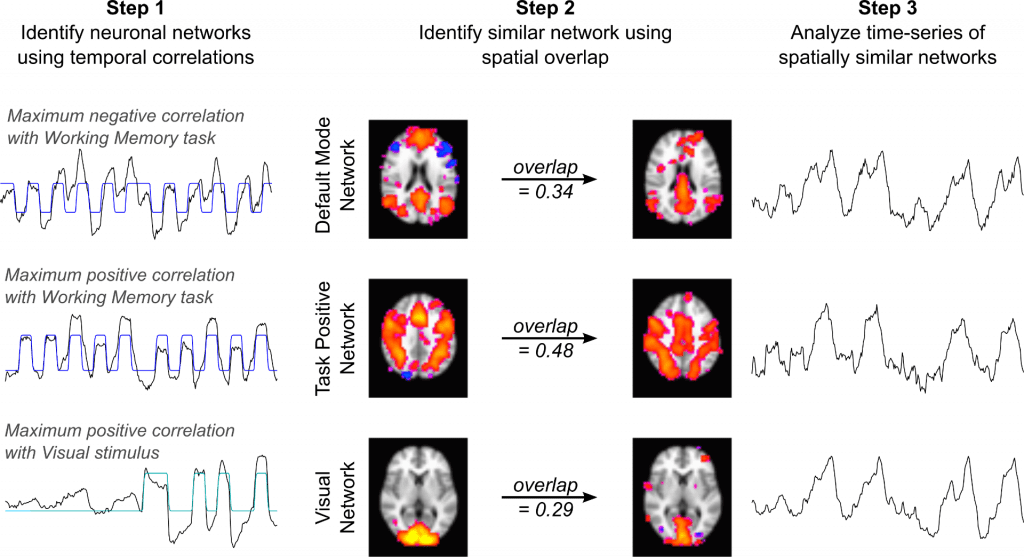Announcing the availability of two new publications in collaboration with the SPiN lab, lead by Cesar Caballero-Gaudes at the Basque Center on Cognition, Brain and Language in Spain! Both focus on the preprocessing and analysis of breath-hold fMRI data to measure cerebrovascular reactivity (CVR) and hemodynamic lag:
BCBL PhD student Stefano Moia and ANVIL postdoc Rachael Stickland co-authored an IEEE paper describing our lagged Generalized Linear Model approach for estimating the temporal delay between systemic carbon dioxide changes and the local BOLD fMRI response, mapping CVR and lag at the voxel level. The approach simultaneously fits other fMRI confounds, such as head motion, to better isolate the physiologic effects of interest. Download the pdf here!
Using the BCBL EuskalIBUR dataset, which uniquely studies breath-hold CVR across 10 repeated weekly MRI sessions, a new preprint in BioRxiv demonstrates the benefits of multi-echo data and compares multi-echo ICA denoising strategies for reliably mapping CVR and lag. Download the pdf here!
 CVR maps for an example subject, scanned weekly for 10 weeks. Each row reflects a different use of multi-echo fMRI data, either combining information across the echo times or using the relationship across echo times and Independent Component Analysis (ICA) to differentiate the CVR effects from highly collinear noise confounds.
CVR maps for an example subject, scanned weekly for 10 weeks. Each row reflects a different use of multi-echo fMRI data, either combining information across the echo times or using the relationship across echo times and Independent Component Analysis (ICA) to differentiate the CVR effects from highly collinear noise confounds.






 The Craig H. Neilsen Foundation has awarded Dr. Molly Bright a SCIRTS Pilot Grant to use imaging to characterize neurovascular plasticity in spinal cord injury. Working with Dr. Milap Sandhu, PT PhD at the Shirley Ryan Ability Lab, we will employ fMRI and cerebrovascular imaging techniques to characterize how one session of Acute Intermittent Hypoxia impacts brain and spinal cord physiology. Acute Intermittent Hypoxia is an emerging intervention that transiently improves motor function in individuals with spinal cord injury; although large clinical trials are getting underway, we aim to better understand the mechanisms for these functional improvements in order to optimize or tailor the intervention. This study will span two years, and recruitment is soon beginning for individuals with incomplete cervical spinal cord injury as well as uninjured control participants. Mark Hoggarth, DPT (left) will be joining the lab later this fall to take the lead on spinal cord imaging and analyses. Welcome Mark, and stay tuned for details on how to get involved with the study!
The Craig H. Neilsen Foundation has awarded Dr. Molly Bright a SCIRTS Pilot Grant to use imaging to characterize neurovascular plasticity in spinal cord injury. Working with Dr. Milap Sandhu, PT PhD at the Shirley Ryan Ability Lab, we will employ fMRI and cerebrovascular imaging techniques to characterize how one session of Acute Intermittent Hypoxia impacts brain and spinal cord physiology. Acute Intermittent Hypoxia is an emerging intervention that transiently improves motor function in individuals with spinal cord injury; although large clinical trials are getting underway, we aim to better understand the mechanisms for these functional improvements in order to optimize or tailor the intervention. This study will span two years, and recruitment is soon beginning for individuals with incomplete cervical spinal cord injury as well as uninjured control participants. Mark Hoggarth, DPT (left) will be joining the lab later this fall to take the lead on spinal cord imaging and analyses. Welcome Mark, and stay tuned for details on how to get involved with the study!

 Jasmine Vu is an incoming
Jasmine Vu is an incoming  Apoorva Ayyagari is a new
Apoorva Ayyagari is a new